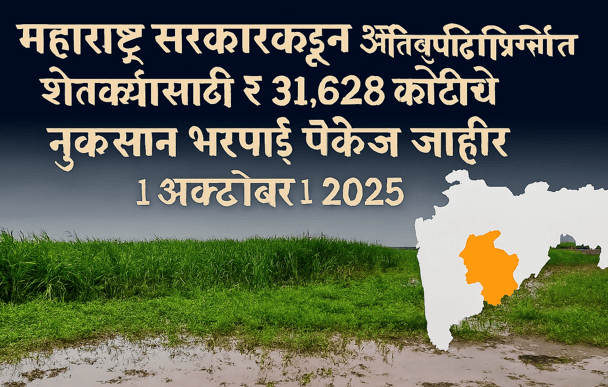On 17 October 2025, global grain and soybean futures surged sharply in overnight trading, driven by worsening drought conditions across key U.S. farming states and aggressive technical buying. According to the latest U.S. Drought Monitor, nearly 38% of an 11-state region—including Iowa, Illinois, Nebraska, and Missouri—is now experiencing moderate to severe drought. This has triggered alarm bells across global commodity markets, especially in Asia, where import-dependent economies are bracing for price volatility.
Market Reaction
- Corn Futures: Up 2.3% on the Chicago Board of Trade (CBOT)
- Soybean Futures: Up 1.8% amid yield concerns
- Wheat: Stable, with minor gains in European markets
Traders cited speculative buying, hedge fund activity, and weather-driven sentiment as key drivers. The rally comes despite relatively strong harvest progress, indicating that fears of reduced yields are outweighing supply optimism.
Harvest Status and Weather Impact
As of last Sunday, 44% of the U.S. corn crop and 58% of soybeans had been harvested, according to a Reuters poll. However, dry weather over the past month has led to lower-than-expected moisture levels in crops, which could reduce final yields. Satellite imagery from NOAA shows declining vegetation health across the Midwest, further fueling concerns.
🇮🇳 Impact on Indian Agriculture
India’s soybean processors and edible oil importers are closely monitoring U.S. trends. Rising global prices may affect procurement costs and domestic retail rates. The Soybean Processors Association of India (SOPA) has urged the government to review import tariffs and buffer stock levels to avoid inflationary pressure.
- Edible Oil Prices: Likely to rise by 5–8% in the next fortnight
- Procurement Costs: Up by ₹2,000–₹2,500 per tonne for importers
- Retail Impact: Consumers may see ₹10–₹15/litre hike in refined oil
Expert Commentary
“If U.S. yields drop further, we could see a ripple effect in Asian markets,” said Dr. Ramesh Kulkarni, agri-economist at ICRISAT. “India’s kharif output is stable, but global price pressure may impact margins for processors.”
Dr. Kulkarni also warned that if the drought persists into November, it could affect winter wheat sowing in the U.S., further tightening global supply chains.
Global Trade Implications
Countries like China, Bangladesh, and Indonesia—major importers of U.S. soybeans—are expected to shift procurement toward Brazil and Argentina. However, logistical constraints and currency fluctuations may limit flexibility. India, with its strategic reserves and diversified sourcing, is better positioned but not immune.
Table: Commodity Price Movement – October 2025
| Commodity | Price (Oct 1) | Price (Oct 17) | % Change |
|---|---|---|---|
| Corn (CBOT) | $4.85/bushel | $5.12/bushel | +5.57% |
| Soybeans (CBOT) | $13.20/bushel | $13.44/bushel | +1.82% |
| Wheat (Euronext) | €245/tonne | €248/tonne | +1.22% |
Domestic Crop Outlook
India’s kharif season has delivered stable output in soybeans, maize, and pulses. However, erratic monsoon patterns in Madhya Pradesh and Maharashtra have led to patchy yields. The Ministry of Agriculture is expected to release revised estimates next week.
- Soybean Output: Estimated at 12.8 million tonnes
- Maize: 23.4 million tonnes
- Pulses: 9.6 million tonnes
Export Opportunities
With rising global demand, Indian exporters of maize and pulses may benefit. The Agricultural and Processed Food Products Export Development Authority (APEDA) is exploring new trade corridors with East Africa and Southeast Asia.
Policy Recommendations
- Review import tariffs on edible oils to cushion retail inflation
- Expand strategic reserves for soybean and maize
- Offer freight subsidies for agri-exporters targeting drought-hit regions
- Enhance crop insurance coverage for erratic weather zones
Voices from the Ground
“We’re seeing price hikes in soybean cake used for cattle feed,” said a dairy farmer in Nashik. “If this continues, milk prices will go up too.” A soybean processor in Indore added, “We’re holding back bulk purchases until the U.S. harvest data is clearer.”
Looking Ahead
Traders expect continued volatility until clearer yield data emerges from the U.S. Midwest. Meanwhile, Indian policymakers are watching retail inflation trends closely. The Reserve Bank of India may factor agri-import costs into its next monetary policy review.
Conclusion
The surge in grain and soybean futures on 17 October 2025 reflects growing uncertainty in global agriculture. For India, this presents both risks and opportunities—rising input costs on one hand, and export potential on the other. Stakeholders across the agri-value chain must stay agile, informed, and responsive as global weather patterns continue to shape commodity markets.

















